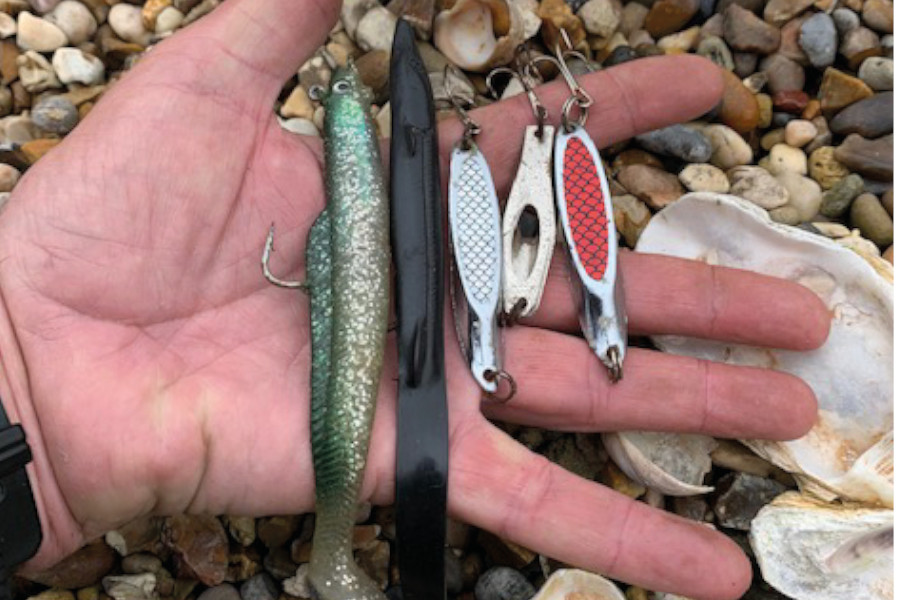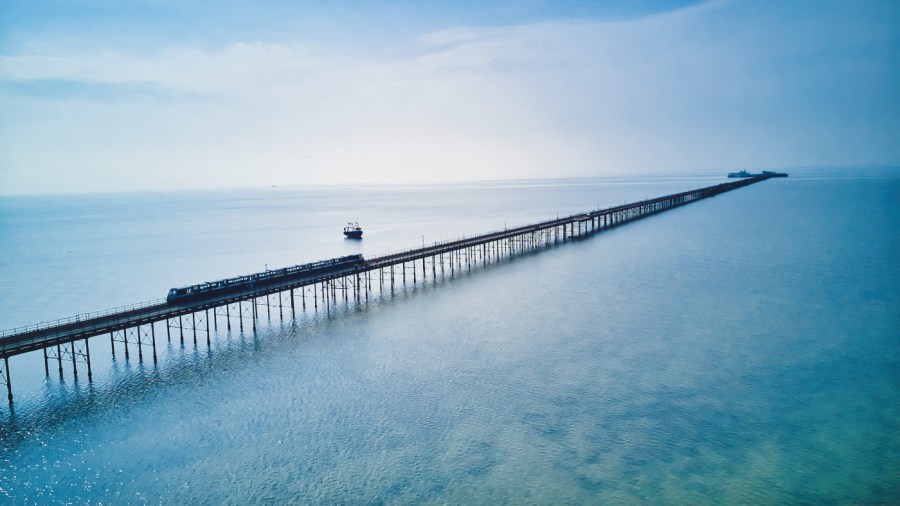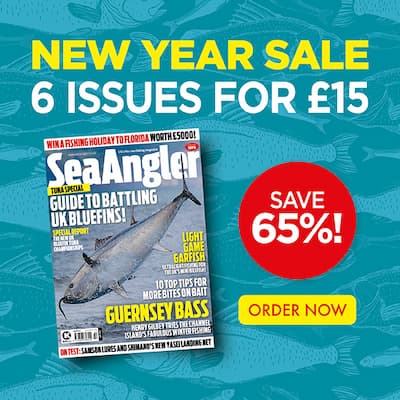Heading to the Essex coast this summer? John Popplewell shares the secrets to success for bass fishing in the shallow waters of his home county
The Essex coast has always been a great place to head for targeting bass, and with some local knowledge it can produce some very big bass too! Don’t be afraid to ask in your local fishing tackle shop; this is always the first place to head for and they will be all too willing to provide valuable information and supply that all important bait.
BAIT
Bass can be caught on all types of bait: squid, fish baits, ragworm, lugworm, shellfish and peeler crabs. All these have their place at certain times and in certain weather conditions, but if there is one go to bait for all conditions on the Essex coast then it has to be ragworm. Bass absolutely love to munch on a lively ragworm!
Hooked through the head and gently cast into the surf, ragworm can be deadly. You can use the same method with the rag just enticingly dropped down the side of a jetty or pier, which can produce immediate bites! If there’s no tide run, then a long trace on a needle point hook baited with a wild, angry, ragworm could catch you that biggest bass of a lifetime.
I have also found squid will work well for bass in rough weather. Try the same bait during a calm spell and it doesn’t really have the same affect; the reason being bass will forage and attack baits during rough and murky seas and bites can be rod bending!
Peeler crab is also a good bait although sometimes difficult to source during the late summer months. A whole soft crab or peeler whipped on to a 2/0-3/0 hook will produce bass of all sizes too.
Fish baits are not really used that much on the Essex coast for bass, but I find those twilight hours into dark work the best and I tend to use really big fish bait, usually half a Bluey or mackerel.
Southend, Clacton and Walton piers can produce big bass using a large fish bait fished down the side of the pier piles. It can be a waiting game and after dark is best, but when a bass hits the bait hang on to that rod as it lurches over and the butt is eye level!
ESTUARY BASS
The Essex rivers and backwaters are a haven for bass during the summer months with plenty of school bass and who knows, your next bite could be a double figure fish. Keep your fishing gear light, big bass can be hooked and netted on just a feeder rod!
Most of the time I use a carp rod, a 4000 size fixed spool reel loaded with 10lb line, a few 2oz/3oz leads and size 2 hooks.
Add a few ragworm and you can be in for some great rod-bending sport! A cast of a few yards into a shallow estuary can put you right on the nose of feeding bass, they will forage in just a couple of feet of water. A long flowing baited ragworm with rig waving enticingly in the tide flow can be deadly.
Those bait robbing shore crabs can be a problem in the estuaries, munching our valuable bait within a few minutes and nipping off the hook traces! If this becomes a problem its always worth adding a couple of floating beads and going heavier on the hook trace, 30lb trace line will still see you catching bass.
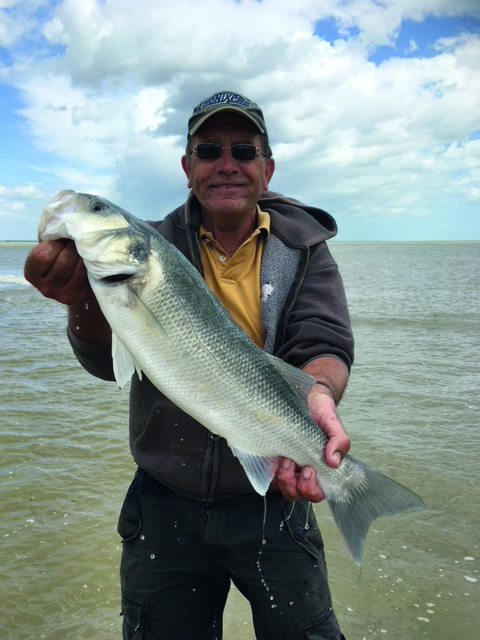
SHORE BASS
Continental rods are the modern way forward when it comes to bass fishing on these flat beaches. There lightness and fine tips are second to none. A bass hooked is a memory etched forever!
We are blessed with some great sea defences here on our low-lying south-east coast; from the recently formed fish tail Norwegian granite breakwaters stretching out into the North Sea, to our old Victorian wooden structures.
Bass love a structure of any sort to forage round and a carefully placed bait at the end of a breakwater or along the side of any obstruction can pay dividends.
There’s no need to cast too far for open shore bass.
Yes, there will be bass at distance, but the majority will be less than 50 meters out! There are plenty of methods to try, from a pulley Pennell to two hook flappers: all will catch bass.
I find keeping things very simple, as long as you have a long flowing trace and a presentable bait, means you are in with a very good chance of some rod-bending action!
FLOAT FISHING
For those anglers who fancy some float fishing, this method can be deadly from piers and breakwaters. A trace baited with a ragworm hooked through the head and worked through the current at variable depths can be an exciting way to fish.
I tend to start with my hook bait just under the float and then work my way slowly down to the seabed every few minutes until I start getting bites. Live or frozen prawns work well on this method, squid cut into long strips and just nicked on the hook can be deadly too.
It’s a case of trial and error, but once you have worked it out then sport can be hectic.
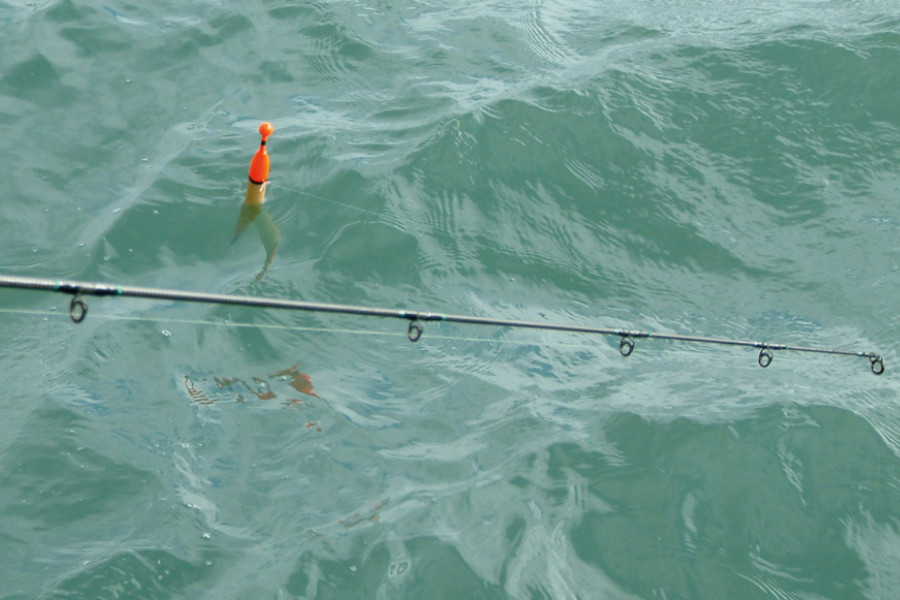
LURE FISHING
A few years ago we wouldn’t be talking about any form of lure fishing from the open beaches, but with our recently formed Norwegian granite sea defences (rocks and breakwaters) we can now spin for bass with more confidence than ever before.
The sea has been encroaching for years on our Essex coastline; However, with the multi-million-pound sea defence which include groynes that stretch 50 or so meters into the sea, these areas are now a haven during the summer months for bass and fish have been reported to me into double figures.
I have a small holdall that I carry especially for lure fishing around these structures, this contains Red Gills, plugs, jelly worms and dexter wedges. Somewhere in one of the pockets are some drilled bullets and spiral leads, a pair of scissors and spare line and that’s it!
I find black Red Gills are the best colour to use by far, even in murky water, dexter wedges come into their own if you need to cast any distance and probably account for 80 percent of the bass I catch from our flat beaches. When all else fails a pike plug can be deadly. I squeeze the hook barbs closed for ease of unhooking.
